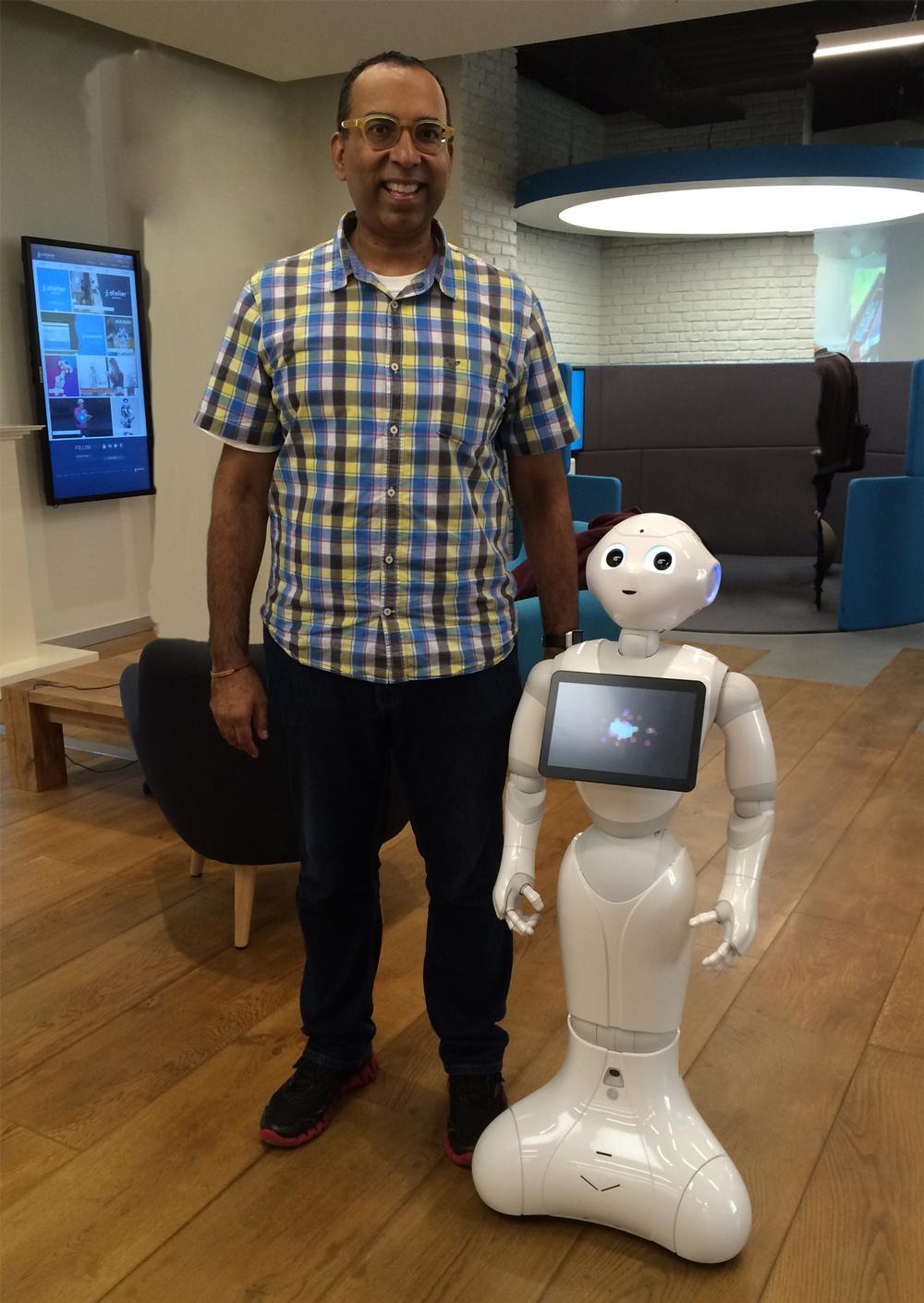It’s impossible to not feel inspired by – and perhaps a bit scared of – the picture that Maneesh Juneja paints of the future. He says: “Imagine a world where 7 billion people are constantly connected and online, carrying a plethora of sensors, wearables and tech so that everything they do is registered and monitored.
“Now imagine the effect that could have on healthcare. As well as details on their blood pressure and heart rate, we could see what each individual eats and when; how much they move and how often; how much sleep they get; and what their drinking habits are. One day, it could be possible to monitor what entire populations are doing – in real time.”
Into the future
Juneja is a digital health futurist and has spent most of the past two decades working within the realm of technology and big data. With a degree in business and computing, in 1997 he joined marketing agency DunnHumby, which was in the process of creating the vast Tesco Clubcard database. It was when he was tasked with managing Tesco’s database of 8 million shoppers, being able to analyse every item they were buying, that Juneja was first offered a glimpse of the true value of data capture.
After leaving the agency, he had a brief stint working the stock market – “I made a lot of money and I lost it all in the space of six months,” he says – but found the lure of exploring opportunities within big data too tempting. Joining another agency, WWAV, he worked with data from charities and learnt more about how analysing data can be used to increase revenue – for example, profiling the type of people who are most likely to commit to a £2 a month standing order donation.
Armed with an increasing knowledge of data and how to use it, Juneja joined pharmaceutical giant GlaxoSmithKline in 2003, where he spent nine years helping the company understand – through analysing data from doctors’ offices and hospitals – how drugs are used in the real world and how this knowledge could impact both drug development and drug safety.
“It was fascinating,” he recalls. “We worked with data from patients in the US, the UK, France and Germany. The largest data set had all the health insurance claims of 100 million Americans. I got to see the impact you can make on the health of people around the world, because you managed to do something with patient data that helped get a drug to market just a bit quicker.”
New frontiers
While he could easily have stayed at GSK and carved out a successful path in the drugs industry, a fortuitous invite to an event in 2011 changed Juneja’s outlook on the future of healthcare – and his own career.
“By chance I went to an event at the University of Cambridge, called ‘Silicon Valley comes to the UK’,” he recalls. “I met a number of leaders from Silicon Valley and they shared their insight and vision around what they were building and the technology that was coming. When I went back to my office, I couldn’t reconcile what I’d heard about the future with what I was working on on a daily basis. So I resigned with no plan whatsoever. All I knew was I needed to create space in my life for something new to come in.”
That ‘something new’ was digital health. Juneja set himself up as a consultant and immersed himself in the subject, consuming everything he could on the topic. Three years on and the investment and risk have paid off. He’s now a speaker in high demand, with his TEDx talks and appearances at high profile conferences such as Health 2.0 & Body Computing establishing him as one of the foremost thought leaders on digital health. He now travels the world both learning and sharing.
Part of his appeal as a speaker is that he isn’t afraid to rock the boat. Last year, he caused a storm by suggesting that technology – more specifically the combination of big data, the internet of things, the quantified self and wearable tech – could make some doctors unemployed within the next decade. He identified GPs as being particularly vulnerable to the possible streamlining of healthcare brought on by developing tech.
To demonstrate the point, when I meet Juneja he whips out his phone, swipes open an app and holds the phone up by both ends as if to take a photo. But rather than framing a shot, the screen is suddenly filled by an ECG graph jumping up and down across it. “This is what my heart is doing,” he explains. “The sensors are on the back of the phone cover and they record my pulse and heart activity from the edge of my fingertips. It’s been approved by the regulators and clinically validated, so you could record this and send it to a cardiologist for an opinion – the app gives all the info he needs to make an assessment. It’s an example of bringing healthcare out of the hospital and into the home.”
Digital fitness
It’s solutions such as these that pose particularly interesting questions not just for healthcare practitioners but for physical activity operators too. If doctors are in danger of being made redundant, where does the technological revolution leave personal trainers and other health club staff?
“It leaves them in similar peril,” is Juneja’s blunt answer. “It’s all about whether fitness professionals will be able to adjust and compete on equal terms with, say, a smartphone app that’s linked to wearable tech sensors and which offers a set of pre-recorded videos or coaching sessions. Can personal trainers compete with the convenience, price and accessibility of a downloadable app – or even a robot?
“It might sound outlandish at the moment, but interactive companion robots are expected to hit the market from late 2015. When it comes to fitness training or coaching, in years to come there are likely to be robots more than capable of teaching exercise movements. Some might even prefer a robot to a human being, because a robot will never judge.”
So what should people working in the fitness sector do to ensure they still have a role in 2025? Juneja says it’s important that the sector as a whole doesn’t just compete with the technology on offer, but begins to create and take part in it.
“I think it will be a case of the industry making sure it’s the one creating the new technologies and testing them, rather than just waiting for something to happen and trying to react to innovations,” Juneja says. “If you just wait for others to come up with the tech, you might find you’ve been done out of a job – that a bit of technology has replaced you.
“It’s about adapting to change but, more importantly, it’s about creating the change. What the fitness industry and people within it must say is: ‘If this is going to be the future, then I still want to play a part in it – and I’ll create something or test something to help it on its way’.”
Personal touch
Yet while technology is taking giant leaps, Juneja feels the only products and solutions that will ultimately be successful are ones that place the human at the core of it – and that doesn’t rule out interaction with other human beings, at least for now.
“We live in an era in which technology, data, algorithms and sensors are increasingly prevalent, but there’s still a need for creating personal experiences,” Juneja says. “Health clubs need to keep asking what value a human being can add to the process – whether it be the coach, the personal trainer or the reception staff. As the number of tasks apps and robots can perform increases, operators may discover different services that can be provided by humans.”
The message from Juneja for PTs and club staff is therefore not entirely grim. “For the foreseeable future at least, there remain many roles within fitness for actual human beings.”























































